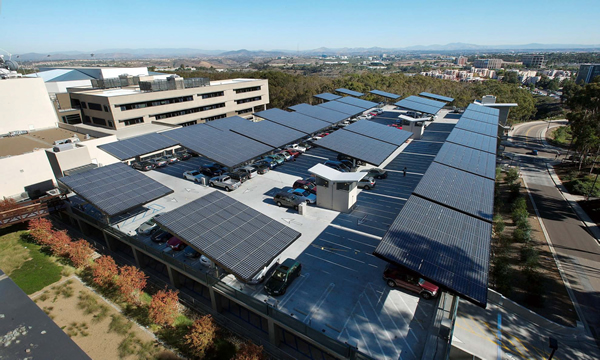As variable renewable resources become a larger portion of the power system, utility companies are turning to load management as a more economical and flexible way to meet the peak power and spinning reserve requirements. Demand response is a load management strategy whereby the utility enters into a contract with customers that agree to reduce their electricity consumption when they get a signal from the utility. Up to now, most programs have been designed for the customer to respond temporarily by possibly shutting down a production line or tweaking a thermostat setting. Now, with the advent of distributed generation and particularly distributed storage, demand response programs are expanding to include these technologies. This can be much more efficient than running traditional generators at part load to provide spinning reserve or dispatching peaking plants. With demand response, there can be substantial cost savings for everyone. Batteries can also respond faster with less environmental impact than traditional peaking plants.

We strongly believe that this is part of a larger trend of increasing distributed generation and storage, making the customer a more active partner with the utility. Since variable generation, such as PV and wind, increase the need for flexibility and spinning reserve and decrease the need for baseload power, they also increase the value of programs like demand response. Fortunately, storage – and distributed generation in general – has matured enough to accommodate this increasing need for flexibility in the system.
HOMER Grid demand response module helps designers model new economic opportunities
At HOMER Energy we want our customers to be able to take advantage of the new value propositions offered by demand response. If a company is modeling the costs and benefits of a distributed renewable energy investment, particularly one with energy storage, demand response can be an important part of the financial equation. We’ve designed a new demand response module as part of our HOMER Grid software. Now HOMER users can stack the benefits of a demand response program on top of the other values, such as demand limiting, maximizing self-consumption, time-of-use arbitrage, and resilience. In conclusion, while demand response participation used to be limited to very specific customer classes, we now anticipate that these types of programs will be offered to a wide range of customers who are using distributed generation and storage.
Join us at the Virtual 8th Annual HOMER International Microgrid Conference, October 12-16, 2020.
Please share news of the HOMER International Microgrid Conference on social media: #HIMC2019

